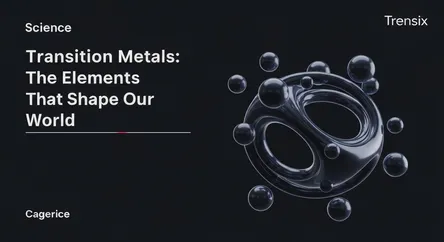Science
Transition Metals: The Elements That Shape Our World

An overview of transition metals, their unique properties, and why these versatile elements are fundamental to industry, technology, and life itself.
What is it?
Transition metals are a large group of elements located in the center of the periodic table, specifically in groups 3 through 12, also known as the d-block. They are defined by their unique electron configurations, having partially filled "d" sub-shells. This structure gives them distinct properties not typically found in other elements. They are generally hard, strong, and lustrous, with high melting points and density. Furthermore, they are excellent conductors of heat and electricity. Key chemical characteristics include the ability to form compounds with vibrant colors, exhibit multiple oxidation states, and act as effective catalysts.
Why is it trending?
Transition metals are at the forefront of technological and sustainable innovation. Their catalytic properties are crucial for "green" chemistry, enabling more efficient industrial processes that reduce energy consumption and waste. They are vital components in renewable energy technologies; for instance, titanium is used in wind turbines, while copper is essential for solar panels. Additionally, metals like cobalt and nickel are indispensable for high-performance batteries that power everything from smartphones to electric vehicles. Ongoing research focuses on harnessing transition metal complexes for advanced applications like more efficient OLED displays and artificial photosynthesis.
How does it affect people?
The impact of transition metals on daily life is immense. Iron is the primary component of steel, the backbone of modern infrastructure in buildings, bridges, and cars. Copper is essential for electrical wiring in homes and electronics. In healthcare, titanium is used for durable medical implants like artificial hips, and platinum is a component in anti-cancer drugs. Many are also essential for human health; iron in hemoglobin transports oxygen in our blood, while zinc is vital for healing wounds. From construction materials to the micronutrients in our bodies, these elements are truly fundamental.